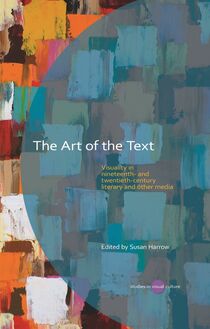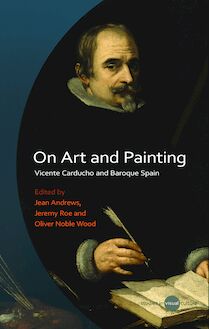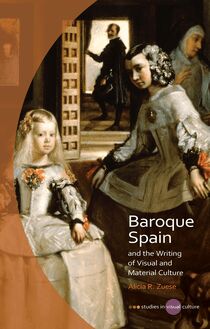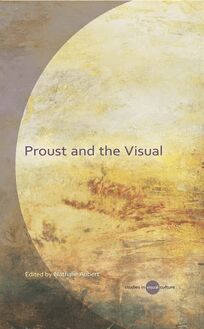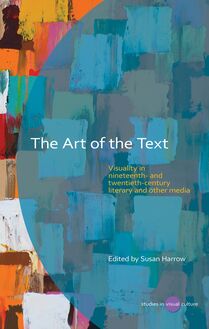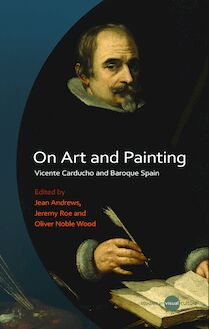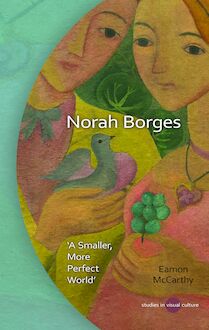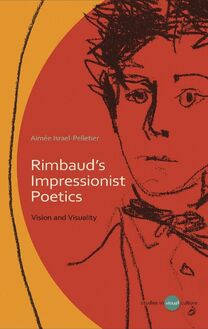Baroque Spain and the Writing of Visual and Material Culture , livre ebook
162
pages
English
Ebooks
2015
Vous pourrez modifier la taille du texte de cet ouvrage
Obtenez un accès à la bibliothèque pour le consulter en ligne En savoir plus
Découvre YouScribe en t'inscrivant gratuitement
Découvre YouScribe en t'inscrivant gratuitement
162
pages
English
Ebooks
2015
Vous pourrez modifier la taille du texte de cet ouvrage
Obtenez un accès à la bibliothèque pour le consulter en ligne En savoir plus
Publié par
Date de parution
20 novembre 2015
Nombre de lectures
1
EAN13
9781783167852
Langue
English
By examining the pictorial episodes in the Spanish baroque novella, this book elucidates how writers create pictorial texts, how audiences visualise their words, what consequences they exert on cognition and what actions this process inspires. To interrogate characters’ mental activity, internalisation of text and the effects on memory, this book applies methodologies from cognitive cultural studies, Classical memory treatises and techniques of spiritual visualisation. It breaks new ground by investigating how artistic genres and material culture help us grasp the audience’s aural, material, visual and textual literacies, which equipped the public with cognitive mechanisms to face restrictions in post-Counter-Reformation Spain. The writers examined include prominent representatives of Spanish prose —Cervantes, Lope de Vega, María de Zayas and Luis Vélez de Guevara— as well as Alonso de Castillo Solórzano, Gonzalo de Céspedes y Meneses and an anonymous group in Córdoba.
Introduction: Viewing the Tale: Cervantes’s Portrait, Lope’s Hieroglyphics and Methods of Verbal Visual Cognition
Chapter One: Image, Text and Memory in Illuminated Manuscripts and Early Print
Chapter Two: Don Quijote and Don Juan: Collectors and the Collection as Models for Critical Inquiry into the Baroque
Chapter Three: Material Representations of the World: Using Physical Texts and Fictional Expression to Create Literary Edifices
Chapter Four: Emblems, Meditation and Memory: Mental Reverberations of the Novella
Chapter Five: Fragmentation of the Protagonist and Society: Emblems, Anamorphosis and Corporeality
Conclusion
Publié par
Date de parution
20 novembre 2015
Nombre de lectures
1
EAN13
9781783167852
Langue
English
S TUDIES IN V ISUAL C ULTURE
SERIES EDITORS
Margaret Topping Queen’s University, Belfast Rachael Langford Cardiff University Giuliana Pieri Royal Holloway, University of London
EDITORIAL BOARD
Mieke Bal University of Amsterdam Paul Cooke University of Leeds Anne Freadman The University of Melbourne Andrea Noble University of Durham María Pilar Rodríguez Universidad de Deusto Eric Thau University of Hawai’i at Manoa
available in series
Aimee Israel-Pelletier , Rimbaud’s Impressionist Poetics: Vision and Visuality (2012) Nathalie Aubert (ed.), Proust and the Visual (2013) Susan Harrow (ed.), The Art of the Text: Visuality in nineteenth-and twentieth-century literary and other media (2013)
S TUDIES IN V ISUAL C ULTURE
BAROQUE SPAIN
and the Writing of Visual and Material Culture
Alicia R. Zuese
© Alicia R. Zuese, 2015
All rights reserved. No part of this book may be reproduced in any material form (including photocopying or storing it in any medium by electronic means and whether or not transiently or incidentally to some other use of this publication) without the written permission of the copyright owner. Applications for the copyright owner’s written permission to reproduce any part of this publication should be addressed to the University of Wales Press, 10 Columbus Walk, Brigantine Place, Cardiff CF10 4UP.
www.uwp.co.uk
British Library CIP Data A catalogue record for this book is available from the British Library
ISBN 978-1-78316-783-8 e-ISBN 978-1-78316-785-2
The right of the Alicia R. Zuese to be identified as author of this work has been asserted in accordance with sections 77 and 79 of the Copyright, Designs and Patents Act 1988.
Add cover image credit to imprint page: Cover image: Diego Velázquez, Las Meninas (c.1656), Museo del Prado, Madrid (photograph Scala/Art Resource, New York)
For Victor and Mateo
Contents
Series editors’ preface
Acknowledgements
List of figures
Introduction. Viewing the Tale: Cervantes’s Portrait, Lope’s Hieroglyphics and Methods of Verbal-Visual Cognition
1 Image, Text and Memory in Illuminated Manuscripts and Early Print
2 Don Quijote and Don Juan: Collectors and the Collection as Models for Critical Inquiry into the Baroque
3 Material Representations of the World: Using Physical Texts and Fictional Expression to Create Literary Edifices
4 Emblems, Meditation and Memory: Mental Reverberations of the Novella
5 Fragmentation of the Protagonist and Society: Emblems, Anamorphosis and Corporeality
Conclusion
Notes
Bibliography
Series editors’ preface
Studies in Visual Culture provides a forum for ground-breaking enquiry into visual-cultural production in its social, historical and cultural contexts. The series places particular emphasis on the exchanges, transactions and displacements that link Europe to wider global contexts across the visual-cultural field. The series seeks to promote critical engagement with visual media as ideological and cultural as well as aesthetic constructs, and foregrounds the relationship of visual cultures to other fields and discourses, including cultural history, literary production and criticism, philosophy, gender and sexuality research, journalism and media studies, migration and mobility studies, social sciences, and politics. The Studies in Visual Culture series thus focuses on exploring synergies and key debates between disciplines, concepts and theoretical approaches, and offers an exciting new arena for testing and extending disciplinary, theoretical and conceptual boundaries.
Acknowledgements
Although this project diverged long ago from my doctoral dissertation that she directed, the generous time, encouragement and guidance of Patricia Grieve at different junctures was essential to its successful realization. I am also grateful for the friendship and advice of Evelina Guzauskyte and Jessica Boon for navigating academia and the publishing process.
At Southern Methodist University, I wish to thank my colleagues in the World Languages and Literatures Department for their support and advice: Libby Russ, Denise DuPont, Olga Colbert, Rubén Sánchez-Godoy, Francisco Morán, Alberto Pastor, Gabriela Vokic, Luis Maldonado, Marlies Gaettens, and my other colleagues for their encouragement. Thanks to members of SMU’s Dedman College Interdisciplinary Institute GEMS for companionship and support: Lisa Pons, Kathleen Wellman, Ed Countryman, Gretchen Smith, Rubén Sánchez-Godoy, Sara Kozlowski and Bethany Williamson. Other colleagues at SMU provided help and encouragement, including Pamela Patton and Eric White. So much of this book depends on materials that SMU’s Interlibrary Loan office was able to supply me with, so special thanks to the staff there, especially Billie Stovall. For making the office enjoyable and for moral and technical support, I would like to thank Rosemary Sánchez and Debbie Garland, and student workers Mayra Pratz and Maury Moreno. I am grateful for funding to carry out research, which came from SMU’s University Research Council and The Ministry of Spain’s Program for Cultural Cooperation between Spain and US universities. I am also grateful to Dean Thomas DiPiero and Dedman College of SMU for further financial assistance.
Special thanks to the anonymous reviewers of the essays, where some of the ideas began to percolate, and of the proposal and book manuscript. Preliminary portions of chapters three and five appeared in the journals Revista de Estudios Hispánicos and Hispania. Thanks as well to Patricia Manning, Yolanda Gamboa, Anne Cruz and Lisa Vollendorf, who gave generously of their time, advice and encouragement at crucial moments.
Special thanks to the encouragement and support of my family: Nancy, Frank, Mike, Jésu, Jesús, Joaquín, María Eugenia, Ito and Victoria. My biggest appreciation goes to Víctor and Mateo for giving me so much to strive for, lots of fun and even more love along the way.
List of Figures Front cover: Diego Rodríguez Velázquez (1599–1660). Las meninas , 1656. Oil on canvas, 318 × 276 cm. Museo del Prado. Photo Credit: Scala/Art Resource, NY. Figure 0.1 Juan de Jáuregui. Miguel de cervantes , 1600. Madrid, Spain Language Academy. Album/Art Resource, NY. Figure 0.2 Lope de Vega. El peregrino en su patria. Barcelona: Sebastián de Cormellas,1605. 21r. Biblioteca Nacional de España. Figure 1.1 Libro del Caballero Zifar MSS Espagnol 36, 99v Bibliothèque nationale de France. Figure 1.2 Libro del Caballero Zifar MSS Espagnol 36, 100r Bibliothèque nationale de France. Figure 1.3 Libro del Caballero Zifar MSS Espagnol 36, 114v Bibliothèque nationale de France. Figure 1.4 Libro del Caballero Zifar MSS Espagnol 36, 115r Bibliothèque nationale de France. Figure 1.5 Jorge Inglés, Retablo Marqueses de Santillana o de los Ángeles, oil/panel, 1455, Capilla Hospital, Buitrago; Private Collection, Madrid, Spain. Album/Art Resource. Figure 1.6 El Conde Lucanor Don Juan Manuel, MS 6376, p. 319, Biblioteca Nacional de España. Figure 1.7 Exemplario Zaragoza: Bartolomé Nájera, 1547. f. 77r Biblioteca Nacional de España. Figure 1.8 Exemplario Zaragoza: Bartolomé Nájera, 1547. f. 77v Biblioteca Nacional de España. Figure 2.1 Anonymous Cuzco School. Trifacial Trinity , c.1750–70. Oil on canvas, 182 × 124 cm. Museo de arte de Lima, Perú Donación Memoria Prado. Figure 2.2 Bartolomé Esteban Murillo (1618–82). The Heavenly and Earthly Trinities (The Pedroso Murillo), c.1675–82. Oil on canvas, 293 × 207 cm. Bought, 1837 (NG13). National Gallery © National Gallery, London/Art Resource, NY. Figure 3.1 Diego Rodriguez Velazquez. The Court Jester Don Diego de Acedo ‘El Primo’. 107 × 82cm. Museo del Prado. Photo Credit: Erich Lessing/Art Resource, NY. Figure 4.1 Juan Francisco de Villava. Empresas espirituales y morales. Baeza: Fernando Díaz de Montoya, 1613. I parte, empresa 41. 95r Biblioteca Nacional de España. Figure 4.2 Sebastián de Covarrubias y Horozco. Emblemas morales. Madrid: Luis Sánchez, 1610. Centuria III Emblema 24. 224r Biblioteca Nacional de España. Figure 4.3 Juan de Borja. Empresas morales. Brussels: Francisco Foppens, 1680. 379 Biblioteca Nacional de España. Figure 4.4 Sebastián de Covarrubias y Horozco. Emblemas morales. Madrid: Luis Sánchez, 1610. Centuria III Emblema 90. 290r Biblioteca Nacional de España. Figure 4.5 El Greco. Saint Francis Kneeling in Meditation , 1605–10. Oil on canvas, 29.9 × 25 in (75.9 × 63.5 cm). Museum Purchase, Meadows Museum Acquisition Fund with private donations and University funds, MM.99.01. Photography by Michael Bodycomb. Figure 4.6 Intercolumnio not set off typographically (‘Aquí me acuerdo señora Leonarda […]’). Lope de Vega. Las fortunas de Diana in La filomena , 1621. 61v Biblioteca Nacional de España. Figure 4.7 Intercolumnio top right column, set off by parentheses. Lope de Vega. La desdichada por la honra in La Circe , Viuda de Alonso Martín, 1624. 112v Biblioteca Nacional de España. Figure 4.8 El casamiento engañoso, Las novelas ejemplares. Juan de la Cuesta, 1613. 238v Biblioteca Nacional de España. Figure 5.1 Giuseppe Arcimboldo (1527–93). The Jurist , 1566. Canvas, 64 × 51 cm. Slot (Castle) Photo Credit: Erich Lessing/Art Resource, NY. Figure 5.2 Empresa XI. Francisco Núñez de Cepeda. Idea de el buen pastor representada en empresas sacras. Lyon: Anisson and Posuel, 1682. Biblioteca Nacional de España. Figure 5.3 Hans Holbein the Younger (1497–1543). Jean de Dinteville and Georges de Selve (The Ambassadors) , 1533. Dinteville, a French nobleman posted to London as ambassador (l.) together with his bishop friend Selve (r.), exemplifying, respectively, the active and contemplative life. Oil on oak, 207 × 209.5 cm. Bought, 1890 (NG1314). National Gallery © National Gallery, London/ Art Resource, NY.
Introduction: Viewing the Tale: Cervantes’s Portrait, Lope’s Hieroglyphics and Methods of Verbal-Visual Cognition
Baroque literary expression is renowned for its painterly attributes, but these visual texts are never static creations. 1 I
